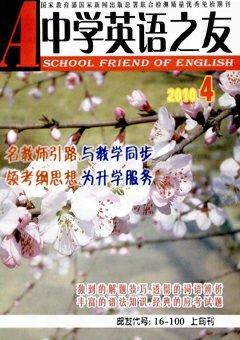七年级(下)Units7-8相似词语练中辨
一、用a bit, a little bit & a bit of填空
1. You look ____ tired. Why not stop working and take a rest?
2. Paul knows ____ French.
3. Please wait ____.
[Key:1.a bit/a little bit 2.a bit of 3.a little bit/a bit]
【辨析】三者都意为“有点,少许,一点儿”,a bit可用来修饰形容词或动词,而a little bit用来修饰形容词,此时可与a bit互换, a little bit和a bit修饰形容词原级或比较级,意为“有点儿”。a bit of用来修饰不可数名词。例:
Your article is a bit long. 你的文章长了一点。
She is a little bit shy. 她有点儿害羞。
He knows a bit of English. 他懂点英语。
二、用say & tell填空
4. Shes ____ a funny story in the classroom.
5. “Hello,” she ____.
6. Peter, ____ your sister to come home early.
7. I want to ____ something about my family.
[Key:4.telling 5.says 6.tell 7.say]
【辨析】◆say后常接所说的内容;不以人作宾语,可说say sth. to sb. 或say sth. about sth./sb.。例:
Shes saying, “Dont draw on the wall.” 她在说:“别在墙上画。”
Can you say it in English once more? 你能用英语再说一遍吗?
◆tell常带两个宾语,其中一个通常是人;表示“讲故事、笑话、事实或说谎话”时,动词常用tell;发出命令或指示时可用tell,用tell sb. to do sth. 结构。例:
He tells me that he wants to be a teacher. 他告诉我说他想成为一名教师。
David told his son to do the homework. 大卫要他的儿子去做作业。
三、用big, large & great填空
8. A ____ number of old people are walking on the street.
9. The elephants ears are like ____ fans(扇子).
10. Jackie Chan is a ____ actor. I like him a lot.
[Key:8.large 9.big 10.great]
【辨析】◆big意为“大的,巨大的”,常指程度,范围,规模,容积,重量等,还可表示“伟大,重要”之意,常与large互换,多用于具体的、有形的人或物,其反义词为little/small。例:
There is a big tree beside the house. 房子旁边有一棵大树。
◆large意为“大的,巨大的”,常指面积,范围,可表示数和量,当它直接用于人时,可表示身体的大,其反义词为small。例:
They say China is a large and beautiful country. 他们说中国是一个面积大而美丽的国家。
We have a large farm. 我们有一个大农场。
◆great意为“大的,极大的,伟大的,重要的”,常指面积,数量,程度(或指抽象的东西,如知识、能力、人格等),用来指人时,表示“伟大的,杰出的”,其反义词为little/small。例:
Chairman Mao is a great leader of China. 毛主席是中国的伟大领袖。
值得注意的是big还可以作“长大了”讲,great有时可表达说话人的喜悦、赞扬等感情。例:
Lily is big enough to ride a bike. 莉莉长大了,可以骑自行车了。
“How do you like my watch?” “Great!” “你觉得我的这块表怎么样?” “好极了!”
四、用also, too & either填空
11. Can you speak French, ____?
12. Sally didnt go and I didnt go, ____.
13. Paul ____ saw that interesting movie.
[Key:11.too 12.either 13.also]
【辨析】这几个词都有“也”的意思,但用法各异。
◆also比较正式,一般放在行为动词之前,系动词、助动词、情态动词之后,不用于句末。例:
I also play the guitar. 我也弹吉他。
◆too多用于口语,常放在句末。前面常用逗号隔开;也可放在句中,前后均有逗号。例:
He is a teacher, too. 他也是一名教师。
◆either用于否定句句末。例:
Mike didnt go to the beach, either. 迈克也没去海滩。
五、用many & much填空
14. There are ____ apples on the table.
15. There is ____ milk in the bottle.
[Key:14.many 15.much]
【辨析】这两个词都有“许多”的意思,但用法各异。
◆many用于替代或修饰可数名词复数形式。例:
Are there many boats on the lake? 湖上有许多船吗?
◆much用于替代或修饰不可数名词。例:
I dont have much time. 我没有多少时间。
六、用or, and & but填空
16. Would Li Ming like noodles ____ dumplings?
17. He is good at English ____ math.
18. I like beef, ____ he likes fish.
[Key:16.or 17.and 18.but]
【辨析】◆or意为“或者”,常用于选择句和否定句之中,表选择或否定的列举。例:
Mary never skis or skates. 玛丽从不滑雪,也不溜冰。
◆and意为“和,并且”,常用于肯定句中,表肯定的列举。例:
Mother gave me a pen and a pencil. 妈妈给了我一支钢笔和一支铅笔。
◆but意为“但是”,表示语意的转折。例:
He is poor, but happy. 他虽穷,但很快乐。
七、根据汉语意思用stop doing sth. & stop to do sth. 完成句子
19. Jim stopped ____ an English song. (吉姆停下来唱了一首英文歌。)
20. The girl soon stopped ____. (那女孩很快就不哭了。)
[Key:19.to sing 20.crying]
【辨析】◆stop doing sth. 意为“停止做某事”。doing是stop的宾语,是要停止的动作。例:
Its time for class. Please stop talking. 到了上课的时间了,请停止交谈。
◆stop to do sth. 意为“停下来去做某事”,强调“停下正在做的事,开始做另一件事”。to do是stop的状语,表示目的,是要开始做的事情。例:
Lets stop to have a rest. 让我们停下来休息一下。

